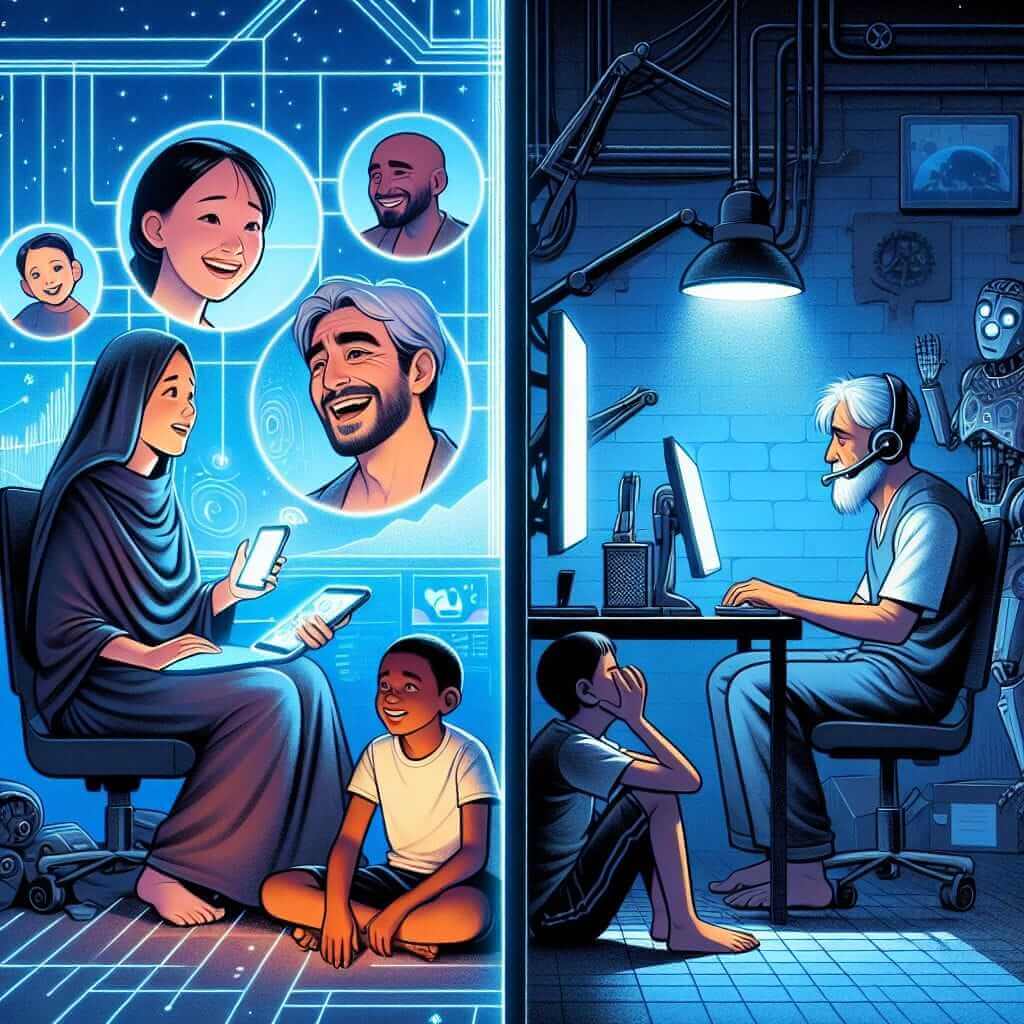The IELTS Reading section assesses a candidate’s ability to understand and extract relevant information from various types of texts. This section involves different question types, including Multiple Choice, True/False/Not Given, and Matching Information, among others. A frequently occurring theme in past IELTS exams has been the social impacts of technological innovation. This topic’s relevance and recurrence suggest a high likelihood of its inclusion in future test papers, making it a vital area to focus on during preparation.
Main Content
Practice Reading Test: The Social Impacts of Technological Innovation
Reading Passage
Technological innovation has dramatically reshaped our society, influencing various aspects of human life. From communication and transportation to healthcare and entertainment, technological advancements have yielded both positive and negative social consequences.
First, the advent of the internet and smartphones has revolutionized the way we communicate. These technologies have made it easier to connect with people worldwide, enhancing social interactions, and providing access to vast amounts of information. However, they have also contributed to privacy issues and the erosion of face-to-face communication skills.
In education, technological tools such as online learning platforms have democratized access to knowledge, providing opportunities to those in remote and underprivileged areas. Nevertheless, this shift also amplifies the digital divide, leaving those without internet access at a significant disadvantage.
Healthcare has seen significant improvements thanks to technological innovation. Advanced medical equipment, telemedicine, and health data analytics have enhanced the quality of care, making it more efficient and accessible. On the contrary, the high costs associated with some innovations can exacerbate inequalities in healthcare access.
Economically, technology has spurred productivity and created new industries and job opportunities. Automation and artificial intelligence, however, raise concerns about job displacement and the future of work. As machines take over repetitive tasks, the workforce must adapt by acquiring new skills, which may not be feasible for everyone.
Lastly, social media and entertainment technologies have transformed how we consume content and interact with the world. While they provide platforms for self-expression and creativity, they also pose risks like addiction, misinformation, and cyberbullying.

Questions
Multiple Choice
-
What is one of the positive social impacts of communication technology?
- A. Increased privacy issues
- B. Enhanced social interactions
- C. Reduced access to information
- D. Erosion of face-to-face communication skills
-
How has technology affected education according to the passage?
- A. Increased costs of traditional education
- B. Widened the digital divide
- C. Reduced access to online learning platforms
- D. Eliminated remote learning opportunities
Identifying Writer’s Views/Claims (Yes/No/Not Given)
-
The passage claims that telemedicine has made healthcare less efficient.
- Yes
- No
- Not Given
-
The author believes that automation will enhance job security in the future.
- Yes
- No
- Not Given
Matching Information
- Match the following effects with the corresponding sections of technological impacts:
- Increased productivity
- Privacy issues
- Enhanced quality of care
Sentence Completion
- The shift towards online learning ____ the digital divide, making internet access crucial for educational equity.
Answer Key
- B. Enhanced social interactions – Communication technologies have improved social interactions by connecting people globally.
- B. Widened the digital divide – The passage highlights that technological advancements in education benefit those with internet access, leaving others at a disadvantage.
- No – The passage states that telemedicine has improved healthcare efficiency and accessibility.
- No – The author mentions concerns about job displacement due to automation, not enhanced job security.
-
- Increased productivity: Economy
- Privacy issues: Communication
- Enhanced quality of care: Healthcare
- amplifies – The shift towards online learning amplifies the digital divide, highlighting the importance of internet access for educational equity.
Common Mistakes
Several common mistakes can occur when tackling reading passages on the social impacts of technological innovation:
- Skimming Too Quickly: Missing important details due to fast reading.
- Misinterpreting Information: Drawing incorrect conclusions from the text.
- Ignoring Context: Failing to consider the context in which certain statements are made.
Vocabulary
Here are some challenging words from the passage:
- Democratize (verb) /dɪˈmɒkrətaɪz/: To make accessible to all people.
- Displacement (noun) /dɪsˈpleɪsmənt/: The removal or displacement of something.
- Telemedicine (noun) /ˌtɛlɪˈmɛdɪsɪn/: The remote diagnosis and treatment of patients through telecommunications technology.
- Erosion (noun) /ɪˈrəʊʒən/: The gradual destruction or diminution of something.
Grammar
Pay attention to the grammar structures used in the passage:
- Present Perfect Tense: “Has revolutionized,” “have democratized” – used to indicate actions in the past that have relevance to the present.
- Comparative Sentences: “more efficient,” “easier to connect” – used to compare different aspects influenced by technological innovation.
Conclusion
When preparing for the IELTS Reading section, it is essential to familiarize yourself with common topics like the social impacts of technological innovation. Practice reading passages, understand the context, and practice answering different types of questions. Consistent practice will enhance your ability to comprehend complex texts and improve your reading score.
Additional Resources
For further practice and to explore related topics, check out these articles: